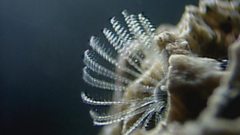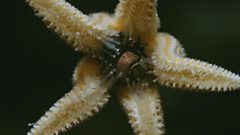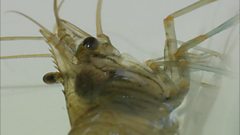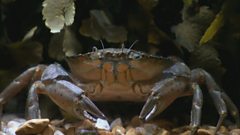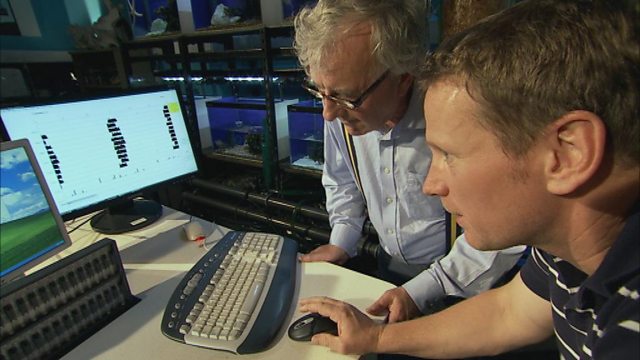
Migration and response to tidal changes
Professor Richard Fortey investigates the rhythmical behaviour of the Eurydice pulchra, the marine version of the woodlouse. With the use of activity monitors they examine the differences in their behaviour at high and low tide.
All organisms have an internal biological clock that allows their behaviour pattern to change. The Eurydice pulchra has a 12.4 hour tidal clock. Their behaviour is monitored as each tube has a single Eurydice pulchra in it at high tide their feeding begins and before the tide goes back out they bury themselves into the sand. This allows their preferred position to be maintained and increased their chance of survival.
Duration:
This clip is from
More clips from Rock Pool Survivors
-
![]()
Climate change and barnacle distribution
Duration: 03:11
-
![]()
Predator prey relationships in rock pools
Duration: 04:15
-
![]()
Rock pools by night
Duration: 04:51
-
![]()
Reproductive cycle of crabs
Duration: 07:28

